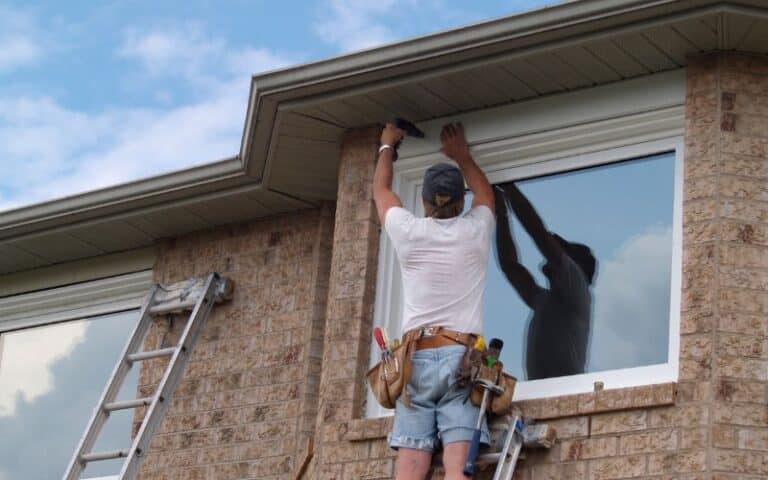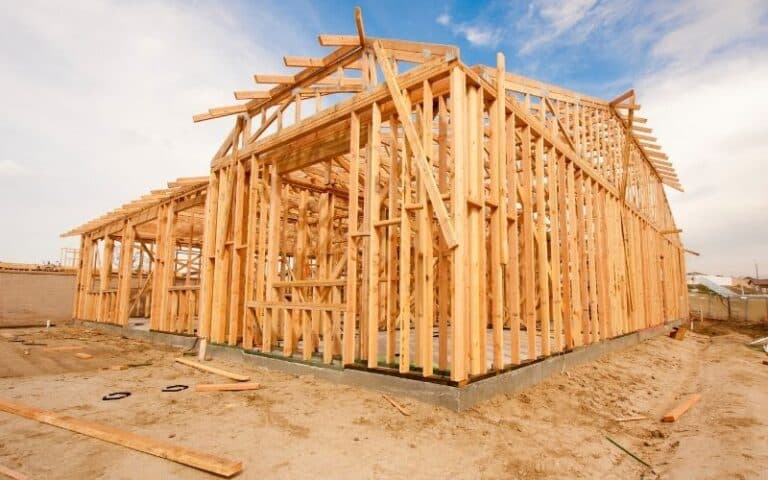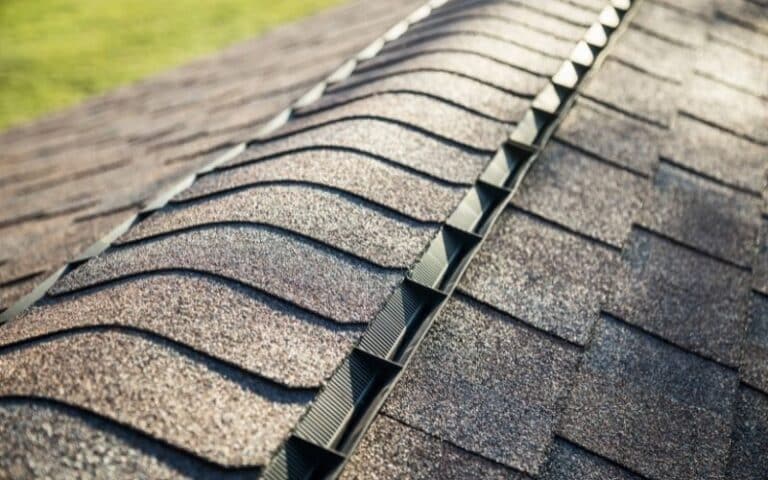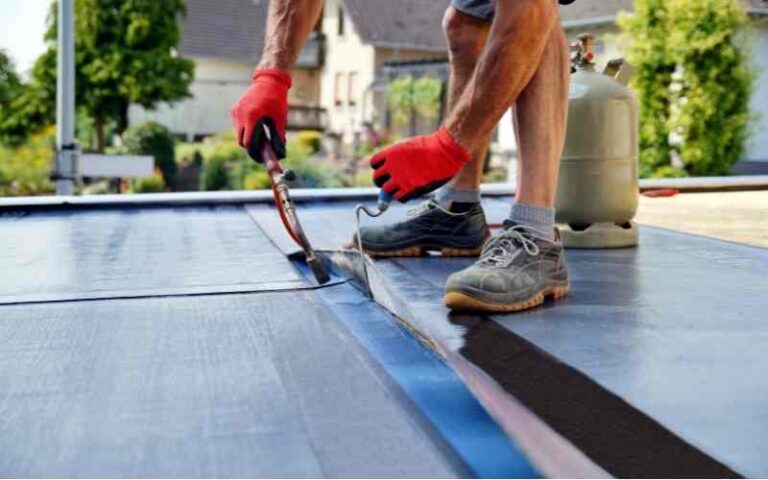Poorly hammered, regular nails can let in water through the roof. This water can leak into the house and cause damage. However, you can eliminate this problem with self-sealing roofing nails.
Self-sealing nails don’t let water through the nail hole. The article below will explain how these nails achieve this.
Self-sealing roofing nails produce a very firm molecular substance. This substance is a sealant resilient to heat, light, and ozone. The sealant works by condensing an adhesive and melts the roof’s surface with it. This process produces a seal that prevents rainwater from going through the nail hole.
Ready for a Roofing Quiz?
What Are Self-Sealing Roofing Nails?
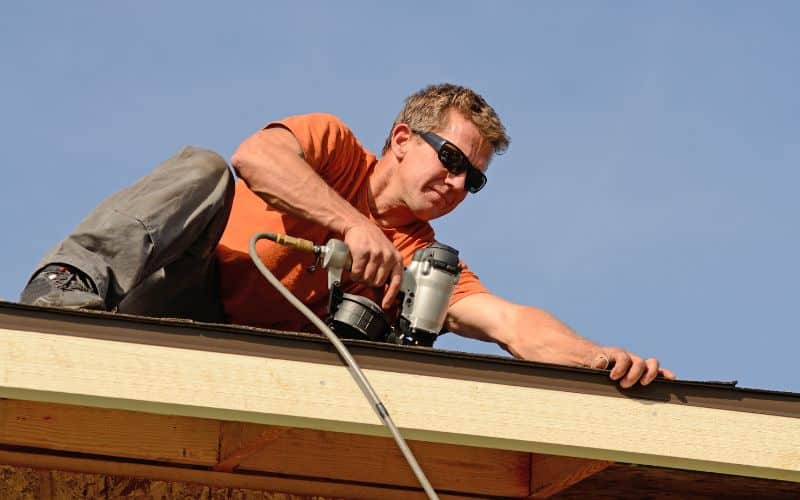
Self-sealing roofing nails have a heat-reactive adhesive loop joined to the nail. The adhesive loop on the nail melts unto the roof producing a waterproof seal.
This seal fills the puncture the nail makes as it goes into the roof. The heat-reactive adhesive is a loop-like pad with a hole in the middle base.
This loop-like pad has an outer surface and an inner surface. These surfaces have adhesive applied, and release paper wraps the adhesive. The adhesive slips any nail with a head and stem.
A release paper is a film that keeps an adhesive surface from early adhesion. The content of the adhesive includes;
- Polyisoprene butyl rubber
- Polyisobutene
- Styrene-isoprene-styrene
- Styrene-butadiene-styrene
- Styrene-ethylene-butadiene-styrene
- Polyurethanes
- Acrylics
- Polybutene
The release paper’s substances include;
- Waxed paper
- Plastic
- Film-like paper
Self-sealing roofing nails must be corrosion-resistant and should be a product of the following materials.
#1. Steel
Roofing nails should be products of steel. Although they are more expensive than other plated nails, steel nails have lesser corrosive abilities.
Pressure-treated wood used for roofing has chemicals that can cause corrosion in nails. If the steel nails are not hot-dipped, the chemicals in the wood can make the nails rust.
Steel produces good nails for coastal regions, asphalt gravel roofs, and slate ceramic.
#2. Copper
Copper naturally is a non-corrosive element; hence is great for producing nails. Copper nails are good for roofing since they can withstand moisture and don’t rust easily.
They change to a reddish-brown color in wet weather and then develop a coat. This coat is a green layer that further prevents corrosion. It is the perfect material for a self-sealing nail.
#3. Aluminum
Aluminum isn’t as strong as the two above, but the material can resist corrosion for some time.
Aluminum nails can be galvanized; galvanized aluminum nails will be a decent option for self-sealing nails.
Galvanization is applying a layer of zinc on a substance. The zinc acts as a protective coat and stalls rusting in the aluminum nail.
Are Self-Sealing Roofing Nails Any Good?
Self-sealing nails fill the hole a nail makes as it’s driven into the roof. The nails stop water from invading the home and causing damage to the roof structure.
The following are some reasons why self-sealing nails are beneficial.
- It seals off the roof and keeps water out of the home.
- The adhesive adds to the integrity of the nails.
- Saves money in the long run.
#1. Seals off the Roof and Keeps Water out Of the Home
The adhesive on self-sealing roofing nails prevents rainwater from leaking into the home. A regular nail can let in water through the hole it’s made for in the roof.
With a self-sealing nail, the water won’t be able to go in since the adhesive fills up the space.
#2. Preserves the Integrity of the Nails
Powerful winds can blow off the roof of a home. Self-sealing nails on the roof are very helpful in areas with strong winds.
The adhesive adds to the nail’s firmness in the roof, thereby holding the roof against the wind.
#3. Saves Money In the Long Run
Self-sealing nails eliminate the cost of repairing a bad or leaking roof. Since self-sealing nails don’t let in water through the roof, you wouldn’t be raising money to fix leakages.
A leaking roof won’t only damage the roof but will also weaken its wooden structure. Over time, the water will cause the wood to rot and weaken.
However, with self-sealing nails, you don’t have to worry about potential repair costs from leakages.
How Do You Use Self-Sealing Nails?
Self-sealing nails are just like regular nails. All you need to do is hammer it down into the roof like other nails.
Once the sealant touches the roof, the release paper eases the separation of the sealant. The sealant melts onto the roof to fill up the nails’ holes.
There’s also a pattern for driving the nails into the wood. OSHA (Operational Safety and Health Administration) recommended a pattern for self-sealing nails.
The international building code advises constructors to nail shingles with six or more self-sealing nails.
This nailing pattern makes the nails resilient against strong winds. Nails within seal lines also have to be enough. Place the nails one inch from the shingle’s edge before hammering it.
This required space is important in regions with wind speeds over 110 MPH. The following are the best kind of nails to attach self-sealing loop tabs.
#1. Ring Shaft Nail
It is best to use ring shank nails with adhesive loops in windy areas. Ring shank nails have spirals or ridges running around the shank.
These spirals enhance the nail’s grip on the roof by 40% or higher—the ridges around the shank function as wedges that securely hold the nails in the wood.
#2. Smooth Shank Nails
Smooth shank nails do not have threads running around the shafts, making them easier to nail. These nails can go through many surfaces faster than other kinds of nails.
Smooth shank nails also have many construction applications. However, these nails aren’t good enough for places with strong winds.
Smooth shank nails don’t provide the extra grip that ring shaft nails provide. You should, therefore, reserve smooth shank nails for less windy regions.
Do you know: What Are the Standard Nail Plate Sizes and Thicknesses?
Are Self-Sealing Roofing Nails Better Than Regular Roofing Nails?
The main advantage self-sealing roofing nails have is they seal up the hole the nail makes in the roof. Regular roofing nails don’t have this ability.
Some differences between the two kinds of nails are below.
| Self-sealing Nails | Regular Nails |
|---|---|
| The loop adhesives on self-sealing nails are expensive. | Regular nails don’t have extra costs. |
| The adhesives cover any space to keep water out. | Regular nails don’t have adhesive seals to block out water. |
| The adhesive seal can make up for nail cap breaks. | Nails with broken caps will easily let in water. |
Self-sealing nails are efficient in their task, but you’ll face some problems with regular nails. These issues arise when one doesn’t hammer in regular nails properly.
A regular nail hammered sideways or not far in will cause water to go in. When the water falls on the nail cap, it can easily follow the nail into the house.
The water squeezes through the hole the nail makes in the roof. If you have regular nails with nasty hammering across your roof, water will drip into the home when it rains.
Water can touch the wires or electrical units inside the roof. This water invasion can damage your wires or cause electrical fires. Furthermore, water can also leak and trickle along walls.
The water will stain your walls and ceiling. Even the roofing structure isn’t left out; water dropping on the wood structure will cause it to weaken.
Subsequently, the wood will grey and even start rotting, causing the structure to fall. Self-sealing nails won’t leak in water through the nail holes and will prevent these damages.
Conclusion
Self-sealing nails come with adhesive loops that melt unto the roof and block the nail hole. Smooth shank nails and ring shaft nails are good for attaching these loops on.
The adhesive loop stops water from entering the home and causing damage. This ability makes self-sealing nails better than regular nails that let water into the house.
Self-sealing nails are no different from regular nails; you can hammer them into the roof like regular nails.

